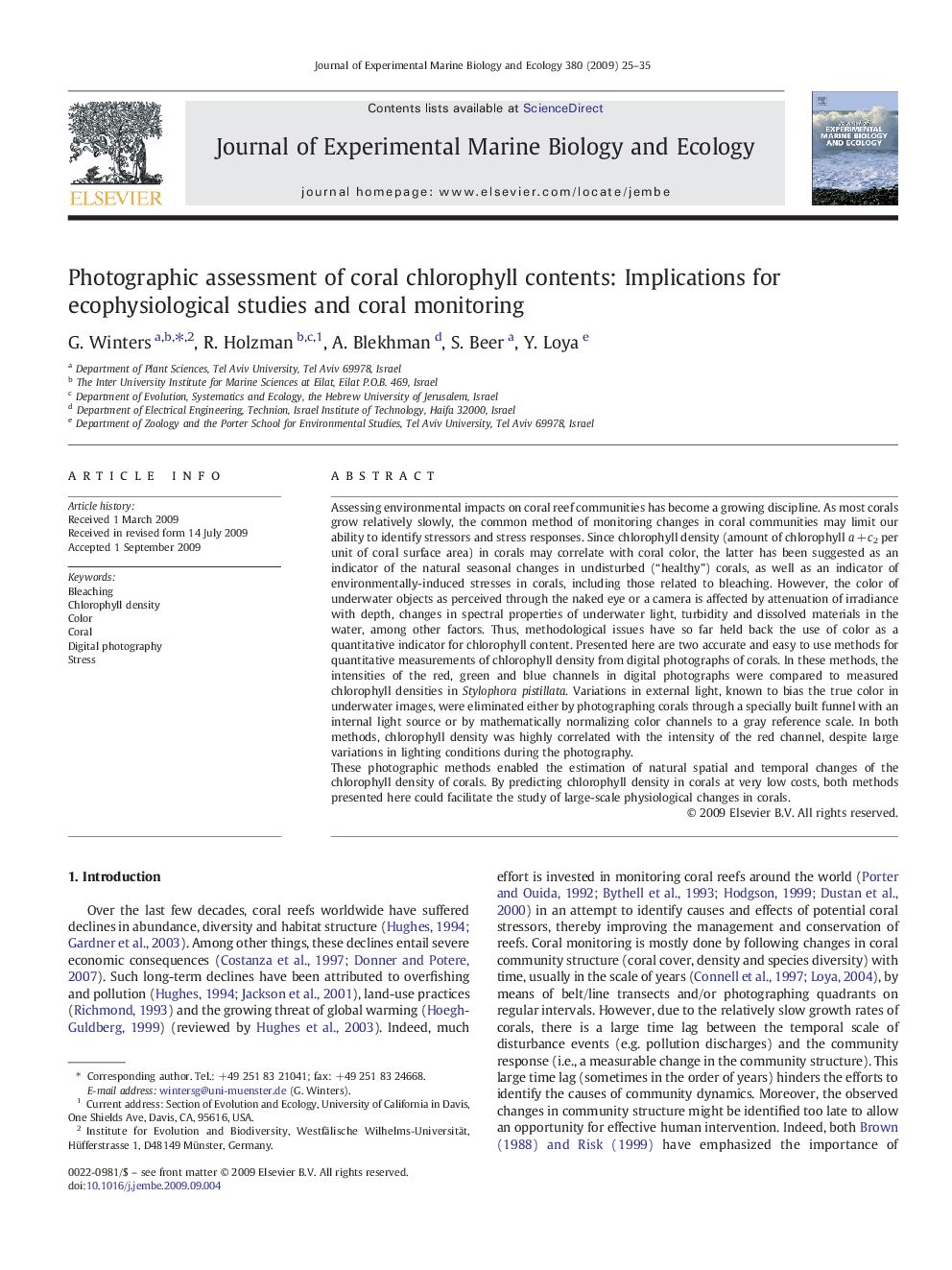| Article ID | Journal | Published Year | Pages | File Type |
|---|---|---|---|---|
| 4396744 | Journal of Experimental Marine Biology and Ecology | 2009 | 11 Pages |
Assessing environmental impacts on coral reef communities has become a growing discipline. As most corals grow relatively slowly, the common method of monitoring changes in coral communities may limit our ability to identify stressors and stress responses. Since chlorophyll density (amount of chlorophyll a + c2 per unit of coral surface area) in corals may correlate with coral color, the latter has been suggested as an indicator of the natural seasonal changes in undisturbed (“healthy”) corals, as well as an indicator of environmentally-induced stresses in corals, including those related to bleaching. However, the color of underwater objects as perceived through the naked eye or a camera is affected by attenuation of irradiance with depth, changes in spectral properties of underwater light, turbidity and dissolved materials in the water, among other factors. Thus, methodological issues have so far held back the use of color as a quantitative indicator for chlorophyll content. Presented here are two accurate and easy to use methods for quantitative measurements of chlorophyll density from digital photographs of corals. In these methods, the intensities of the red, green and blue channels in digital photographs were compared to measured chlorophyll densities in Stylophora pistillata. Variations in external light, known to bias the true color in underwater images, were eliminated either by photographing corals through a specially built funnel with an internal light source or by mathematically normalizing color channels to a gray reference scale. In both methods, chlorophyll density was highly correlated with the intensity of the red channel, despite large variations in lighting conditions during the photography.These photographic methods enabled the estimation of natural spatial and temporal changes of the chlorophyll density of corals. By predicting chlorophyll density in corals at very low costs, both methods presented here could facilitate the study of large-scale physiological changes in corals.
